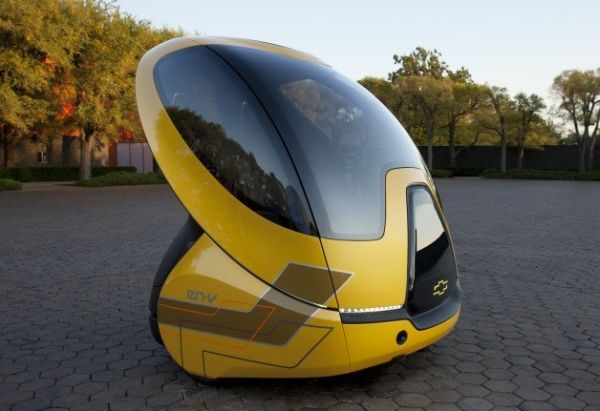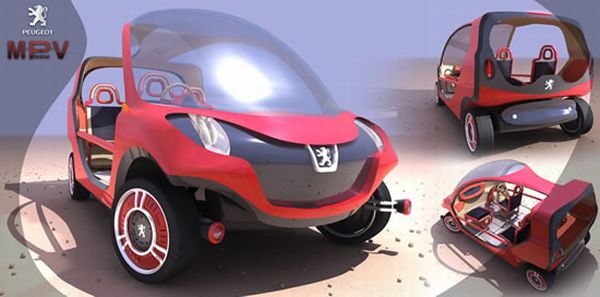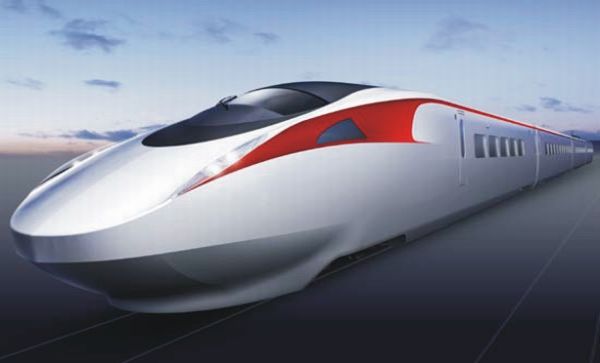
The green machine
Chevrolet EN-V, short for electric networked vehicle, is future personal transport vehicle being developed by the General Motors. According to the company, this vehicle would be a part of future personal transport systems in mega cities. One of the stars of the Shanghai World Expo last year, the electric network vehicle would address environmental concerns, decrease traffic congestion, decrease fuel dependency, and address parking and safety issues as well.
It has been estimated that about 60 percent of the world population would be living in cities by 2030. This will increase congestion and severely impact mobility on roads as the existing transport models would become redundant by then. In such a situation, the small, electric-powered Chevrolet EN-V would not only provide affordable personal transport to the people but also reduce the amount of carbon emission in air.
Green factor
Chevrolet EN-V is a zero-emission electric-powered vehicle for personal transport. It would operate through a network of similar vehicles and reduce a person’s dependence on cars for personal travel. The present transport model does not provide for affordable and private environment for personal travel. Cars are predominantly used, as even the public transport system is not adequate in many cities. This increases the burden on fossil fuels, which are depleting faster than ever. It is one of the largest sources of carbon emission and is increasingly changing the climate dynamics all over the world.
However, with electricity as its only fuel, Chevrolet EN-V would address both the issues. It would also end the emission of other harmful particles that causes many health hazards like acid rain and respiratory problems.
The powertrain:
The EN-V is powered by zero-emission lithium-ion batteries and propelled by electric motors. It can run for about 40 kilometers on a single recharge. A new dynamic stabilization technology allows this vehicle to carry two persons comfortably in about one-third of the space required in present vehicles. This drive-by-wire vehicle can operate both autonomously and manually. Besides, the vehicle has been equipped with a global positioning system, vehicle-to-vehicle communication system, and distance sensing technologies. In addition, in contrast to the present vehicles, the EN-V weighs less than 500 kg and has the length of only 1.5 meters.
The highs:
The Chevrolet EN-V concept offers solution to many problems associated with modern day transport system. In the autonomous mode, it provides independence to commuters who may not wish to drive. This provides them the freedom to utilize their driving time for other purposes like reading, entertainment or completing some official assignments.
One of the problems faced by modern day commuters relate to availability of parking space as the number of personal vehicles are increasing exponentially all over the world. These vehicles generally require about 10 sq.m of space and remain in the parking lot for most of the time. However, the EN-V would not require much space and would remain mobile for most of the time through a networked transport system.
In addition, the vehicle can be recharged from any conventional wall outlet and will not require any special arrangements. It can also be operated in all-weather and road condition. Besides, it would help in climate control up to some extent and reduce the dependence on oil and gasoline.
The lows:
Notwithstanding all the highs mentioned above, the EN-V can only form a part of all the efforts taken in present times to reduce vehicular emission and decrease traffic congestion. It can run for only 40 kilometers on a single recharge. This means that it could be used only within the range of an urban settlement and not for long distance journeys. Little space inside the vehicle would not inspire people who have to travel with some luggage even within a city. That means the present day cars would continue to exist, unless some path breaking zero-emission clean fuel technology is developed.
In addition, it would require a lot of electricity to run this vehicle. As we know that most of the electricity is produced from non-renewable carbon-emitting sources like coal and gas at present. Renewable sources are very small contributor to the total electricity production, while use of clean nuclear energy is still mired in debate. This means that the EN-V would not be a totally zero-emission vehicle, as the General Motors is promoting it.




